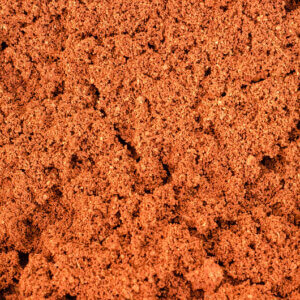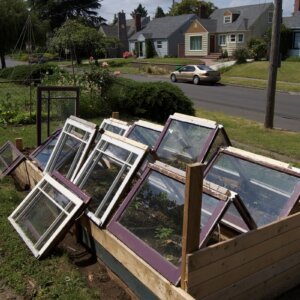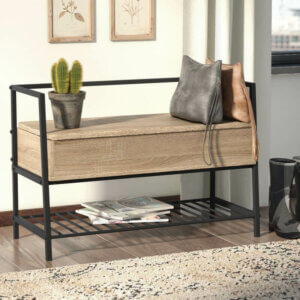When heating with wood, there are many options in choosing a wood-burning appliance.
Some will choose to build a masonry oven that functions not only as a heater, but also as a beautiful centerpiece in their home. Others, especially those living in a small space like a tiny home or cabin, will choose some form of rocket mass heater due to their efficiency in heating a small space. The vast majority, however will select one of the many metal woodstoves that are available on the market. For convenience and ease of installation, a good metal woodstove can’t be beaten.
So let’s take a look at the modern metal woodstove.
How Metal Woodstoves Work
The types of woodstoves that I will be talking about in this article use cordwood as fuel and are located within the room that they will be heating. As such, I will not be talking about wood pellet stoves or wood-fired furnaces. All of these stoves turn seasoned firewood into heat through a process called combustion. Technically-speaking, the scientific formula for combustion is
wood + O2 → CO2 + H2O + energy
This means that wood and oxygen burn to form carbon dioxide and water while giving off energy in the form of heat. All woodstoves are designed with this combustion in mind. All of them will require some form of fresh air intake to supply the wood with oxygen to keep combustion going. They will also be able to control this flow of air so that it can be restricted or shut off completely to kill the fire.
All woodstoves will have a chimney that allows the waste products (carbon dioxide, water, and other incompletely burned substances) to escape from the combustion chamber. And all of them are designed to allow for the efficient transfer of this heat from the stove into the room directly through the metal body of the stove itself as metal conducts this heat quickly.
Types of Metal Woodstoves
There are many different metal woodstoves to fit almost any budget and aesthetic preference. Here are some of the options you have available to you.
Barrel Stove

This first sort of stove is the cheapest you can get. You simply buy a conversion kit online that will transform any metal barrel (typically 36- or 55-gallon barrels) into a woodstove. Each kit comes with a door that will be screwed on one end of a metal barrel, two pairs of legs, and a damper for where the barrel will connect to the stove pipe. These are most commonly installed in a workshop or other outbuilding as they take up a lot of room and are not generally approved for use inside a dwelling.
Boxwood or Log Woodstove

This style of stove is one of the smallest and is made to heat a space like a cabin, large tent, or single-room house. They generally have a small cooking surface with one or two burners built directly onto the stove. They increase the efficiency of the stove as you are able to cook your food and heat your home with the same fuel at the same time. Firewood is loaded in through a door on the front of the stove.
Mini Woodstoves

A few companies have specialized in making very small woodstoves that are for use in tiny homes. Cubic and Tiny Wood Stove are two of the most popular. Often measuring only about a foot to a side, these small stoves can fit in even the smallest room. Their compact size is both a strength and a weakness. The one possible downside is that you cannot easily purchase wood that will fit in it as most cordwood sold comes in 16-inch lengths. These stoves require wood that is about 6 inches long.
Cast Iron Plated Woodstove

This cast iron plated woodstove is the most common type used to heat homes in the United States. It is basically a cast iron box that is raised off the ground on legs or a pedestal. There is a range of sizes to heat anywhere from 1,200 square feet (like this one) to 3,200 square feet (linked below), so there is probably a model that will match your specific situation. The vast majority of these come with a glass door so you and your family can enjoy the sight of a fire while heating your home. Nothing really beats the sight of a fire on a cold winter evening, let me tell ya!
The most modern of these stoves are generally EPA certified due to their high efficiencies. This certification is thanks to a baffle that sits on the upper side of the burn chamber. It helps ensure secondary combustion of flammable material in the gases which means less emissions up the flue and more heat for the user. Efficiency ratings between 70% and 80% are common with these stoves.
Wood Cook Stoves

The final type of woodstove that I will introduce here are the wood cook stoves. These large appliances are mainly designed to be used for cooking, but they also do an admirable job of heating a home.
They are often larger and heavier than any of the other stoves mentioned, so make sure you have the room for it. There is a small firebox on one side of the stove where the fire is kept. This is separated from the oven portion of the stove so the fire will not burn one side of whatever it is you are trying to cook. The top of the stove is one large cooking surface for heating pots and pans.
Most will have “burners” that are sets of concentric rings that can be removed to accommodate whatever size pot you are using. The hot gases from the fire will heat both the oven and the cooking surface before passing out of the unit through the chimney. They are the most aesthetically-pleasing of the woodstoves — more than just a black metal box.
Installing a Metal Woodstove
First of all, let me say that it is important to follow the manufacturer’s installation instructions when installing a woodstove. The manual comes with your woodstove will give detailed instructions on how to install it. If you are a competent DIY-er, you shouldn’t have too much problem doing it yourself. However, if you have any doubt as to your ability to follow the instructions, it might be best to seek out professional help. In any case, here are some of the basic points of installation.
Supporting the Weight
As cast iron is the most commonly used material in the construction of these appliances, they are going to be quite heavy. Even the smallest boxwood-style woodstove is going to weigh 150 pounds; stoves used to heat an average-sized house will weigh between 300 and 400 pounds. Keep in mind that this is only the weight of the stove. Wood waiting to be burned will add to the weight, and any masonry added around the stove to increase efficiency will also add significant weight. This additional weight needs to be supported by your floor — a floor that was probably not designed to hold such a load. Because of this, you may need to add extra support below the location of the stove.
Distance to Combustibles
One of the most important considerations when installing a woodstove is the distance to combustible materials. Most homes are constructed of the same material that is being actively burned in the stove: wood. You need to make sure the woodstove is spaced an appropriate distance from all the combustible material of your home. This includes everything below, above, and to the sides of the stove, and these distances are clearly stated in the instruction manual and are specific to each stove. For example, one stove that is designed to heat a 3,200 square foot home requires 26 inches from the side of the stove to a wall, while a smaller stove designed to heat 900 square feet only requires 23 inches.
Under the stove, you should include an insulated mat that is designed for the purpose. It prevents the heat from affecting the framing that supports the stove. If you are able to build directly on a masonry foundation, you can probably forgo the use of this pad.
Also know that the distance to walls can be GREATLY reduced through the use of heat shields. These are thin sheets of noncombustible material that is attached to the wall with a small space (1 to 2 inches) between the wall and the heat shield. Some people use sheet metal for this purpose, but I tend to go with a piece of cement board with tile as I think it looks better.
Stove Pipe
All woodstoves need to have something get the hot flue gases from the combustion chamber to the outside of the house (the stove pipe). There are various sizes of stove pipe, but the most common size for woodstoves that burn cordwood is 6-inch pipe. The first length of pipe immediately connected to a woodstove is typically single-wall black stove pipe. From there you have a choice to go straight up through your house, bend 90 degrees, and take it out through the wall of the house, or connect it to an existing fireplace chimney. Just be aware that when you take it through a ceiling or wall, you will need to buy a wall thimble which is specifically designed for the purpose. And once you get through the ceiling or wall, you will need to switch to an insulated double or triple-wall pipe.
Final Thoughts
So there you have it, a brief primer on woodstoves available today. As you can see there is a woodstove designed for pretty much any application that you could desire. Any house, small or large, can have its heating needs either partially or completely met by a woodstove. And maybe the best thing is you don’t need to ever worry about the electric going out in the dead of winter. If it does, you and your family will still be sitting cozy next to a warm fire in your little woodstove. That is peace of mind that we can all enjoy.










































Leave a Reply